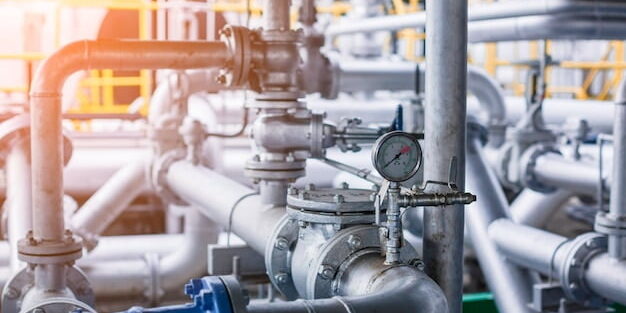Brochure
Download our document to see specific data of the service and how we work.
Let’s Start Work
Together
Please feel free to contact us. We will get back to you with 1-2 business days. Or just call us now.

How can we help?
We set the discipline that applies engineering, physics, engineering mathematics, and materials science principles to design, analyze, manufacture, and maintain mechanical systems. It is one of the oldest and broadest of the engineering disciplines since early times.
Technically, mechanical engineering is the application of the principles and problem-solving techniques of engineering from design to manufacturing to the marketplace for any object. Mechanical engineers analyze their work using the principles of motion, energy, and force.
Industrial Valves, Pipes, & Fittings
Industrial Valves
Industrial valves are essential components in fluid handling systems, controlling the flow and pressure of various substances, including liquids, gases, and slurries. We offer a comprehensive range of valves designed to meet the specific needs of different industries and applications.
Types of Valves We Offer:
- Gate Valves: Used for on/off applications where full flow is required. They have a flat gate that slides across the valve seat to control flow.
- Globe Valves: Suitable for throttling applications where precise control of flow is needed. They have a rising stem and a spherical plug that rotates to regulate flow.
- Ball Valves: Popular for their quick-acting and full-flow capabilities. They have a rotating ball with a hole through it that aligns with the flow path to allow or restrict flow.
- Check Valves: Prevent backflow in fluid systems. They automatically close when the flow direction reverses.
- Butterfly Valves: Used for large-diameter lines and offer low pressure drop and quick actuation. They have a disc that rotates within the valve body to control flow.
- Control Valves: Used to regulate flow based on a control signal, often used in automated processes.
- Safety Valves: Designed to protect equipment and systems from overpressure by automatically venting excess pressure.
Pipe Fittings
Pipe fittings are used to connect pipes and valves in a fluid handling system. We offer a wide variety of fittings to suit different pipe sizes, materials, and applications.
Types of Pipe Fittings We Offer:
- Elbows: Used to change the direction of a pipe.
- Tees: Used to create a branch or connection to another pipe.
- Reducers: Used to reduce the diameter of a pipe.
- Enlargers: Used to increase the diameter of a pipe.
- Couplings: Used to connect two pipes of the same size.
- Unions: Used to connect two pipes with a removable connection.
- Flanges: Used to connect pipes and valves using bolts and gaskets.
Materials
Our valves and fittings are available in various materials to suit different applications and environments, including:
- Carbon Steel: Suitable for general-purpose applications and moderate temperatures and pressures.
- Stainless Steel: Offers excellent corrosion resistance and is suitable for a wide range of applications.
- Cast Iron: Used for low-pressure applications and provides good strength and durability.
- Non-Ferrous Metals: Such as brass, bronze, and copper, are used for specific applications due to their corrosion resistance and other properties.
- Plastic: Lightweight and corrosion-resistant, suitable for certain applications.
Applications
Our valves and fittings are used in a wide range of industries, including:
- Oil and Gas
- Chemical Processing
- Water and Wastewater Treatment
- Power Generation
- Food and Beverage
- Pharmaceutical
- Pulp and Paper
- HVAC
Quality and Standards
We are committed to providing high-quality valves and fittings that meet or exceed industry standards. Our products are manufactured to comply with international standards such as ANSI, ASTM, ASME, and DIN.
By offering a comprehensive range of valves, pipes, and fittings, we aim to meet the diverse needs of our customers and provide reliable and efficient solutions for their fluid handling applications.

